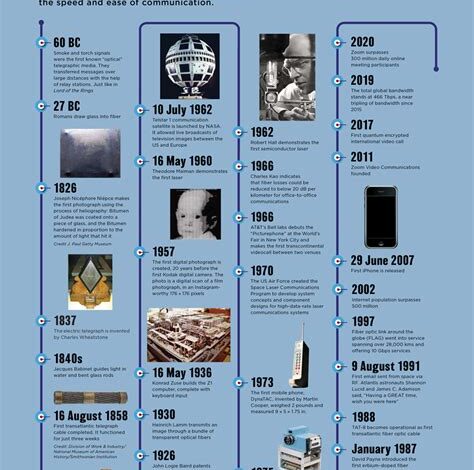The Evolution of Communication Technology

Explore the evolution of communication from ancient writing systems to modern mobile phones in this insightful blog post. Learn about major milestones along the way.In today’s fast-paced and connected world, it’s easy to take for granted the various forms of communication technology that we use on a daily basis. But have you ever stopped to think about how these technologies came to be? From the invention of writing systems to the emergence of internet and mobile phones, the evolution of communication technology has been a fascinating journey that has shaped the way we interact and connect with one another.
In this blog post, we will explore the pivotal moments in the history of communication technology, from the early days of writing systems to the introduction of the printing press, the invention of the telegraph, the game-changing introduction of the telephone, and the revolutionary emergence of the internet and mobile phones. Join us as we delve into the remarkable advancements and innovations that have brought us to where we are today in the world of communication technology.
Invention of Writing Systems
Invention of Writing Systems
The invention of writing systems marks a significant turning point in the history of communication. It allowed people to record their thoughts, ideas, and knowledge in a permanent form, laying the foundation for the development of literature, history, and culture. The earliest writing systems, such as cuneiform and hieroglyphics, were invented in ancient civilizations, enabling them to keep records, communicate with distant cities, and preserve their cultural heritage.
Writing systems also played a crucial role in the dissemination of knowledge and information. The invention of the printing press in the 15th century revolutionized the way books, newspapers, and other written materials were produced and distributed. This advancement in communication technology made it possible for ideas to spread more quickly and widely, leading to the exchange of information and the growth of literacy.
Today, the invention of writing systems continues to influence how we communicate with one another. The internet and mobile phones have further transformed the way we access and share written content, creating new opportunities for global communication and collaboration. Writing systems have come a long way from their humble beginnings, and they continue to shape the way we communicate in the modern world.
Development of Printing Press
The development of printing press in the 15th century was a monumental breakthrough in the history of communication technology. Before the invention of the printing press, books were painstakingly hand-copied by scribes, making them rare and expensive. With the printing press, books could be mass-produced, making them more accessible to the general public. This led to a surge in literacy rates and the spread of knowledge and ideas across Europe.
During the early years of the printing press, movable type was used, allowing for the easy rearrangement of letters and symbols. This made the production of books more efficient and cost-effective. The most famous early printed book is the Gutenberg Bible, which was printed by Johannes Gutenberg in the 1450s. The printing press revolutionized the way information was disseminated, ushering in a new era of communication and education.
As the printing press continued to evolve, new techniques and technologies were developed, paving the way for the mass production of newspapers, pamphlets, and other printed materials. This dissemination of information played a crucial role in shaping public opinion and fueling the spread of ideas, ultimately contributing to significant historical events such as the Reformation and the Renaissance.
Invention of Telegraph
The invention of the telegraph revolutionized long-distance communication, making it possible to send messages across great distances in a matter of seconds. The telegraph was invented in the early 19th century and quickly became essential for businesses, governments, and individuals who needed to relay information over long distances. Using a system of electrical signals transmitted over wires, the telegraph allowed for the rapid exchange of information between distant locations. This invention marked a significant milestone in the history of communication technology, paving the way for further advancements in the field.
One of the most famous figures associated with the development of the telegraph is Samuel Morse, who is credited with the invention of the Morse code, a system of representing letters and numbers with a series of dots and dashes. This code could then be transmitted over the telegraph wires, allowing for the encoding and decoding of messages. The telegraph played a crucial role in improving communication not only within nations, but also across international borders, facilitating trade, diplomacy, and the spread of news and information.
The telegraph was eventually superseded by more advanced communication technologies, such as the telephone and the internet, but its impact on the world cannot be overstated. The invention of the telegraph paved the way for global connectivity and set the stage for the development of more advanced forms of communication that we rely on today.
Introduction of Telephone
The introduction of the telephone marked a significant turning point in the evolution of communication technology. It was a revolutionary invention that changed the way people communicated over long distances. Before the invention of the telephone, the only way to communicate across distances was through written letters, which could take days or even weeks to reach their intended recipient. With the introduction of the telephone, however, people could now have real-time conversations with others, no matter how far apart they were.
One of the most notable figures in the history of the telephone is Alexander Graham Bell, who is credited with inventing the first practical telephone in 1876. This invention was a major breakthrough in communication technology and laid the foundation for the modern telephone systems that we use today. The introduction of the telephone not only made communication faster and more convenient, but it also opened up new possibilities for businesses, governments, and individuals to connect with one another in ways that were previously unimaginable.
Over time, the telephone has continued to evolve, from the introduction of rotary dial phones to the development of cordless and mobile phones. Today, we live in a world where communication has become more accessible and instantaneous than ever before, thanks in large part to the invention and introduction of the telephone.
Emergence of Internet and Mobile Phones
With the emergence of the Internet in the late 20th century, a revolution in communication technology began. The Internet connected people across the globe through a network of computers, allowing for the exchange of information and communication in ways that were previously unimaginable. This marked a significant shift in how people accessed and shared information, paving the way for the mobile phone to become an essential part of modern life.
The development of the Internet and the widespread use of mobile phones have transformed the way we communicate, conduct business, and access information. With the Internet, people gained access to a vast repository of knowledge, communication tools, and entertainment. The rise of mobile phones further enhanced this connectivity, allowing individuals to stay connected on the go and access the Internet from anywhere.
Today, the Internet and mobile phones have become integral to our daily lives, shaping the way we communicate, work, and interact with the world around us. The emergence of these technologies has connected people in ways that were once unimaginable, creating a global network of communication and information exchange that continues to evolve and expand.





